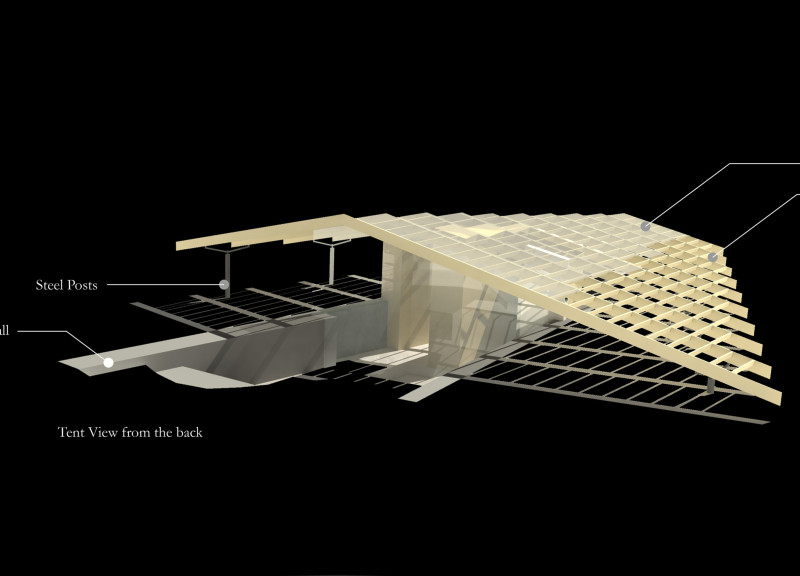5 key facts about this project
The project comprises several key components, including individual guest tents, a centralized host residence, and a Common Core area featuring shared amenities. Each element is strategically arranged to respect the undulating terrain, creating a flow that encourages exploration within the landscape. The materials used—polycarbonate for roofing, steel for structural support, stone for grounding elements, and wood for warmth—are purposefully selected to enhance both functionality and aesthetic appeal.
The Field Tents is not merely a collection of structures; it is a conceptual exploration of solitude and community within nature. The raised design elements, including a semi-sunken layout for the tents, allow the architecture to emerge organically from the earth, minimizing visual disruption while maximizing the connection to the environment. Access pathways are intentionally designed to be unobtrusive, facilitating movement without intruding on the landscape’s natural beauty.
Design Approach and Materiality
A unique aspect of the Field Tents project is its emphasis on adaptive materiality. The choice of polycarbonate roofing allows for an abundance of natural light while offering protection from weather conditions. This material enhances the experience by creating dynamic lighting conditions throughout the day. The integration of steel posts provides necessary structural integrity, enabling open interiors that facilitate flexible use.
The inclusion of stone walls acts as a counterbalance to the lightweight roofing system, ensuring stability and durability while grounding the structure in its environment. The juxtaposition of these materials not only serves functional purposes but also contributes to the project's overall aesthetic coherence, highlighting the relationship between the man-made and natural elements.
Spatial Organization and Community Engagement
The spatial arrangement of the Field Tents promotes a balance between privacy and communal engagement. Each guest tent is designed to accommodate various numbers of occupants, while the host residence serves as a gathering point for larger activities. The centrally located Common Core offers essential facilities, including a communal kitchen and dining area, facilitating social interactions in an inviting setting.
Furthermore, the purposefully designed meditation zone allows for individual contemplation, emphasizing the project's commitment to providing spaces for both solitude and community engagement. Pathways connecting these areas not only guide visitors through the landscape but also enhance the project's accessibility, drawing attention to the interplay between architecture and nature.
To gain a deeper understanding of the Field Tents project, including its architectural plans, sections, and design ideas, readers are encouraged to explore the detailed project presentation. Engaging with these architectural elements will provide valuable insights into the design methodologies and innovations that define this unique open retreat in nature.


























